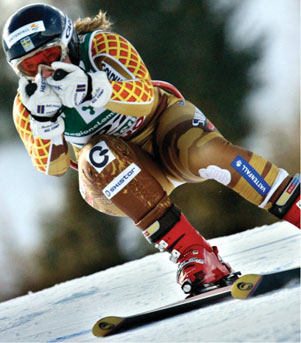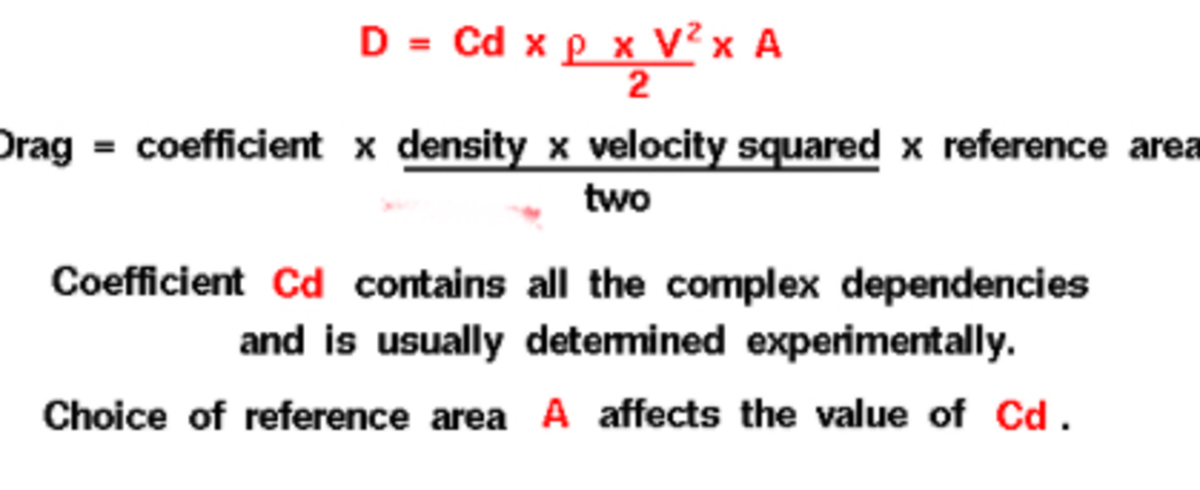Does crouching in an 'egg position' help a skier?
Classical Mechanics
Level
1
In the figure below, the skier crouches in an 'egg position.'
Which of the following options best describes her effort to crouch like that?

She does so to minimize wind resistance
She does so to maximize the normal force
She does so to increase her density
She does so to reduce the friction between her skis and the snow
This section requires Javascript.
You are seeing this because something didn't load right. We suggest you, (a) try
refreshing the page, (b) enabling javascript if it is disabled on your browser and,
finally, (c)
loading the
non-javascript version of this page
. We're sorry about the hassle.

The drag force acting on the skier is given by:
F D = 2 1 C ρ A v 2
where:-
C is the drag coefficient, which can vary along with the speed of the skier. But typical values range from 0.4 to 1.0
ρ is the density of the air
A is the projected frontal area of the skier perpendicular to the flow direction (that is, perpendicular to his velocity v) or the cross-sectional area
v is the velocity of the skier relative to the air
So the skier tries to minimize the drag force acting on her by reducing the cross-sectional area.
Note: The density of the skier does not depend on her position or shape and the drag force doesn't depend on the density of the skier.